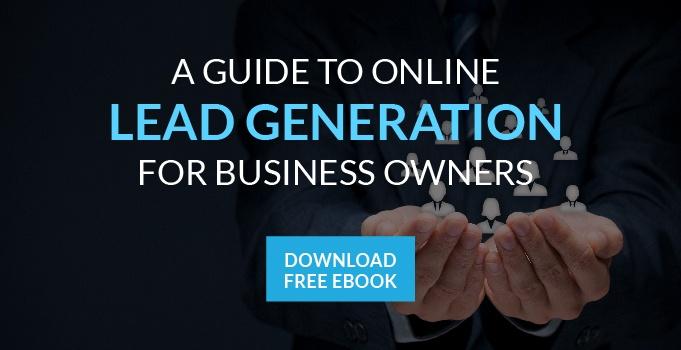 Buyer personas are an essential part of the inbound marketing methodology. They are the inbound equivalent of a “target audience.” These are the people that you want buying your product or service, your ideal customer. Some might say they are the heart of all your marketing efforts because everything you create and execute is for them. According to HubSpot, “a detailed buyer persona will help you determine where to focus your time, guide product development, and allow for alignment across the organization.”
Buyer personas are an essential part of the inbound marketing methodology. They are the inbound equivalent of a “target audience.” These are the people that you want buying your product or service, your ideal customer. Some might say they are the heart of all your marketing efforts because everything you create and execute is for them. According to HubSpot, “a detailed buyer persona will help you determine where to focus your time, guide product development, and allow for alignment across the organization.”
Buyer personas are often one of the first things you should work on when beginning a new marketing campaign. Small businesses can really benefit from them because it will help you really determine who to target. Instead of wasting time going after everyone, which can often be the downfall of many small businesses, this marketing technique provides guidance and focus to help you attract and convert the people most likely to buy.
Reflect on your current customers
The best place to start when creating buyer personas is to think about your most common customers. Ask yourself some of these questions:
- What do they have in common?
- What are their demographics and background (age, income, education)?
- What type of job do they have?
- Are they loyal or repeat customers?
- How did they learn about your business?
- Why did they choose your business?
These answers don’t have to be perfect yet. You are just trying to form a basic idea about your customers at the moment. You are looking for trends and relationships, which will help you in the next steps. This exercise is good for small businesses because it makes you think about who you are really serving. If you are a pest control company, and you thought your most common customer was a homeowner but learned it was actually restaurant owners, now you have a better idea of where to focus your marketing efforts.
Interview past and current customers
There is no better place to go for information than the source. If you really want an accurate overview, then reach out to your past and current customers. You can send out a short survey via email, perform a brief telephone survey, or ask them in person. A great way to get responses is offer something in return like a discount or the chance to win a free product or service.
Once you better understand your customers’ motivations in choosing your business and how they learned about you, then you will have better insight into how similar people might act as well. As Forbes puts it, “if you want to get the best return on your marketing dollars, you don’t want to rely on luck. Instead, you need to know exactly who your target customer is.”
Create your personas based on your research
Now it is time to actually craft the buyer personas. The best way to start is to only consider one, single fictional person. This person represents an actual group that you will target. You want to give this person all the characteristics of this group and not just demographics but also deeper info. You want to know what makes this person buy something, what problems they need solved, how they like to buy things, and other consumer insights.
Let’s do an example. Let’s say you are a dentist and wanted to start a new marketing campaign to build more awareness of your practice. By interviewing your current patients, you found your most common clients are stay-at-home mothers and upper-class businessmen. You had previously been targeting college students because your practice is located in a college town, but you now see this was misguided. A possible buyer persona could be named Homemaker Helen. Now, you consolidate your research and write about her.
Homemaker Helen might have two children between the ages of 5 and 14. She is married, middle class, and is a stay-at-home mom. She tends to make most of the medical related decisions in her family, such as making appointments and choosing doctors or dentists. She is looking for places that accommodate the whole family, not just the adults, and she is more likely to choose a place if recommended it by a friend or neighbor. She usually does extensive research online before making important purchasing decisions and judges companies based on their website, social media pages, and reviews.
This is just an example, but it should show you what a buyer persona looks like. You want to detail how this person makes their decisions and what motivates them, which will show you what you need to address in your marketing efforts. To target Homemaker Helen, for example, you might consider setting up or becoming more active on social media sites, and also ensuring that your website provides a good user experience and shows patient reviews.
Determine how many you need
Once you know how to create personas, you need to figure out how many you need. The answer will vary based on your customers and business type. The main thing that will determine how many buyer personas to create is dramatic differences in motivation. You might have two demographically different groups, like young adult women and middle-age men, but if they both make consumer decisions in similar ways, you probably don’t need two personas.
In our dentist example, if our stay-at-home mom relies on social media and reviews for making purchasing decisions and our businessmen makes his decision based on search engine rankings, then you know you need two personas. Overall, buyer personas are there to help you and keep your marketing efforts on a specific path. As a small business you want to focus your efforts where it will count. You don’t have time and money to waste trying to bring in people that aren’t interested in your products and services. Start with the buyer persona that drives the most sales for you and grow from there!


Comments